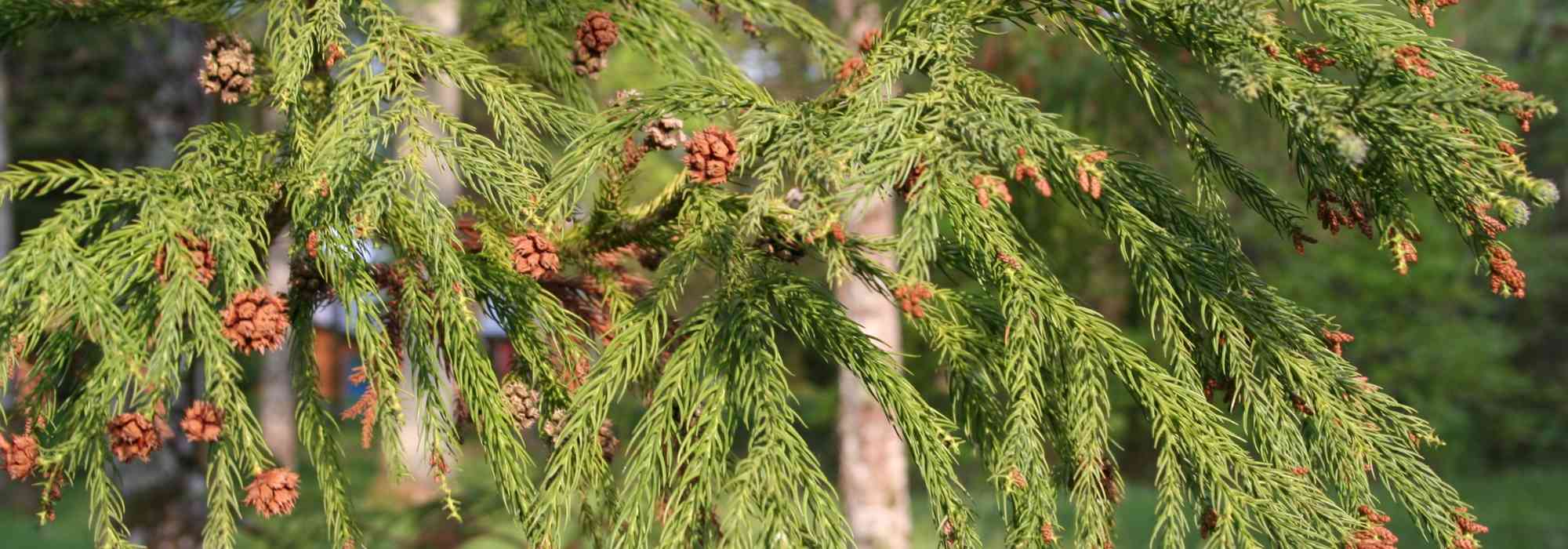
Cryptomeria, Japanese cedar: planting, pruning and care
Contents
Japanese cedar or Sugi, in a nutshell
- Japanese Cryptomeria are conifers with straight trunks and short needles curved towards the branch, not prickly, giving them a reptilian look.
- Harvested as wood in Japan and on Réunion Island, it is grown in gardens for ornamental qualities of its many sought-after cultivars.
- There are dwarf forms such as Cryptomeria japonica Vilmoriniana to moderately vigorous ones such as Sekkan Sugi with cream shoots, or Elegans, distinguished by very elegant feathery foliage turning rust-coloured in autumn.
- Cryptomeria are hardy trees (-15 to -20°C) that prefer deep, cool, rich but well-drained soil and are planted singly or in sunny to semi-shaded rockeries.
A word from our expert
Japanese Cryptomeria or Japanese cedar (Cryptomeria japonica), sugi in Japanese is a large conifer native to Japan, China and Korea truly unique in its kind. There is only one species of Cryptomeria, with some morphological variations depending on origin, but it has given rise to many cultivars that are less vigorous, even dwarf, and much prized in gardens. This conifer with an elegant pyramidal habit, clad in fine evergreen foliage and easy to grow, is indispensable in a collection garden. Its considerable, if not gigantic, growth approaching 40 metres in its native habitat is reduced to around ten metres in Europe, although a few 30-metre specimens exist in England. Nevertheless, it is the countless cultivars of more modest stature, such as Japanese cedar Elegans Viridis, or dwarf forms like ‘Elegans Nana’, that are most common in private gardens. These conifers are selected to form beautiful evergreen hedges that display magnificent rust, bronze or red colours in autumn and winter, or as unusual specimens to show singly, like Cryptomeria japonica Sekkan Sugi or Cryptomeria japonica Vilmorin Gold for example.
National tree of Japan, Cryptomeria was introduced to Europe in the mid-19th century and is a major forest species in Japan, China, the Azores and on the island of Réunion where it was introduced. Its scented, rot-resistant wood has a reputation for deterring insects and termites. An essential oil with a woody scent appreciated for purifying indoor air is extracted from it.
Cryptomeria growth is fairly rapid (except for dwarf forms), and its small-sized varieties prove undemanding as regards soil, although they do prefer rich, cool, well-drained, slightly acidic ground to prosper well. It is recommended to plant it in a sheltered position. Pot cultivation is possible for dwarf varieties, the container volume influencing the size of the young plant: young cryptomerias are, moreover, ideal subjects for bonsai enthusiasts!
Description and botany
Botanical data
- Latin name Cryptomeria
- Family Taxodiaceae
- Common name Cryptomère, Japanese cedar
- Flowering February to March
- Height between 0.30 and 40 m
- Sun exposure sun or partial shade
- Soil type fresh, clayey, acidic to neutral
- Hardiness Good (-15 to -20°C)
The Cryptomeria japonica (syn. fortunei) belongs to family Taxodiaceae, like bald cypress (Taxodium distichum), American sequoias or Chinese Metasequoia, but its leaves resemble those of no other conifer. They are pointed claws, not sharp, about 1 cm long, arranged awl-like around the shoot, with a smooth, fairly supple texture reminiscent of plastic. Evergreen leaves are eventually renewed after a few years but in a particular way: whole sections of shoot brown before falling, a process often referred to as décurtation, also observed in Araucaria.
Japanese cryptomeria reaches large dimensions, up to 30–55 m tall, with a very slender habit and rapid growth of around 6 to 8 m in 10 years in Japan’s rain forests. Longevity may reach 1,000 to 2,000 years according to one specimen at Misaka shrine in Nagano, 30 m high with a trunk 4 m in diameter at the base. Bark peels away in vertical strips of reddish-brown. Its distribution area in warm mountainous regions of Japan and southern China between 1,000 and 2,500 m altitude demonstrates great adaptability, particularly as this species already existed in dinosaur times. There is some variability between Japanese and Chinese specimens. Cryptomeria japonica var. sinensis has a less rigid habit owing to finer branches. Japanese researchers have also noted that above 1,750 m, Cryptomeria reproduces only by layering, whereas more favourable conditions also permit sowing, which leads to greater genetic diversity.
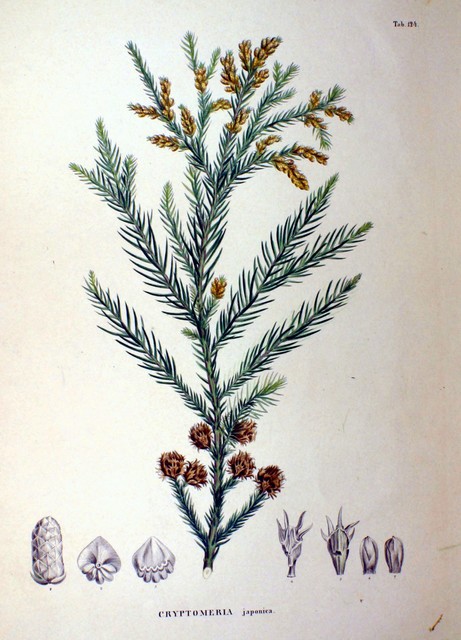
Cryptomeria japonica – botanical illustration
The species has given rise to more than two hundred cultivars, including compact rounded dwarfs with very slow growth and very short needles such as Vilmoriniana, and forms with soft, airy foliage such as Elegans or Elegans Viridis. The leafy shoots of many cultivars often take on a bronze‑to‑rust tint in cold weather, which is exceptional in cultivar Elegans whose columnar habit can reach up to 9 m high by 2.40 m wide, and much larger where it layers and forms a clump! Cryptomeria japonica var. cristata produces fused, flattened shoots resembling a cockscomb, adding an odd touch to the scene.
Flowering is monoecious: the male aments form small terminal clusters in winter that release abundant pollen in February–early March. Female flowers form tiny green rosettes at the tips of branchlets that swell after fertilisation to about 1.5 cm in diameter by autumn before browning and releasing their seeds the following autumn. Each cone bears around forty scales ending in a curved point.
Japanese cedar is widely used as an ornamental plant in temperate gardens worldwide, in Europe, India, North America and Australia, while it is also an important forest species in Japan, China, the Azores and Réunion. It is the object of genuine veneration in Japan, notably at Nikko near Tokyo, where an alignment of nearly 14,000 specimens, some 400 years old, lines a 37 km avenue. Its wood, very fragrant but fairly soft, is prized for temple construction and coffins in China, and is also used in furniture, construction and panelling because it resists fungal and insect attack, doubtless thanks to its content of essential oil.
Read also
How to take cuttings from conifers?Main varieties of Cryptomeria
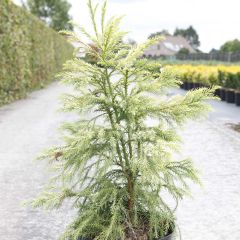
Cryptomeria japonica Sekkan-Sugi
- Height at maturity 6,50 m
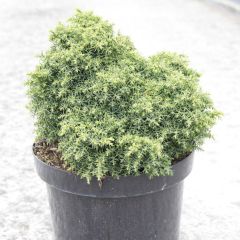
Cryptomeria japonica Yokohama
- Height at maturity 1,10 m
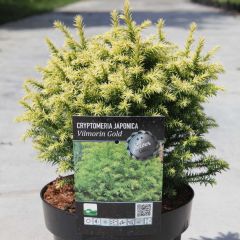
Cryptomeria japonica Vilmorin Gold
- Height at maturity 1 m
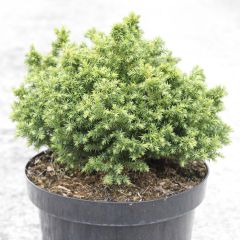
Cryptomeria japonica Vilmoriniana
- Height at maturity 90 cm
Discover other Cryptomeria
View all →Available in 2 sizes
Available in 2 sizes
Available in 2 sizes
Available in 1 sizes
Available in 1 sizes
Available in 1 sizes
Available in 1 sizes
Available in 1 sizes
Available in 2 sizes
Available in 2 sizes
Planting
Where to plant Cryptomeria?
Cryptomeria tolerates a fairly fresh, well-drained, rather fertile ordinary soil, even slightly calcareous, neutral or acidic. It dislikes excessively dry or very shallow soils. It particularly appreciates the mild, humid climate of the Atlantic coast but acclimatises fairly easily elsewhere, even if its dimensions remain more modest.
Plant in full sun where climate allows, except varieties with light-coloured foliage such as Sekkan Sugi, which do better in partial shade to avoid sunburn. Situate the young plant sheltered from dry, cold winds that can scorch young shoots, and in partial shade in southern regions. Minimum temperatures tolerated are about -15°C to -20°C depending on clones, bearing in mind branches do not tolerate the weight of snow well.
Dwarf forms tolerate planting in a deep container, which slows their growth and helps keep their habit even more compact. They are also suitable for rock gardens, though not in sites that are too sunny or windy, as the plant prefers cool, humid air. Roots can draw moisture from under the rocks. Bonsai training is common with Cryptomeria.
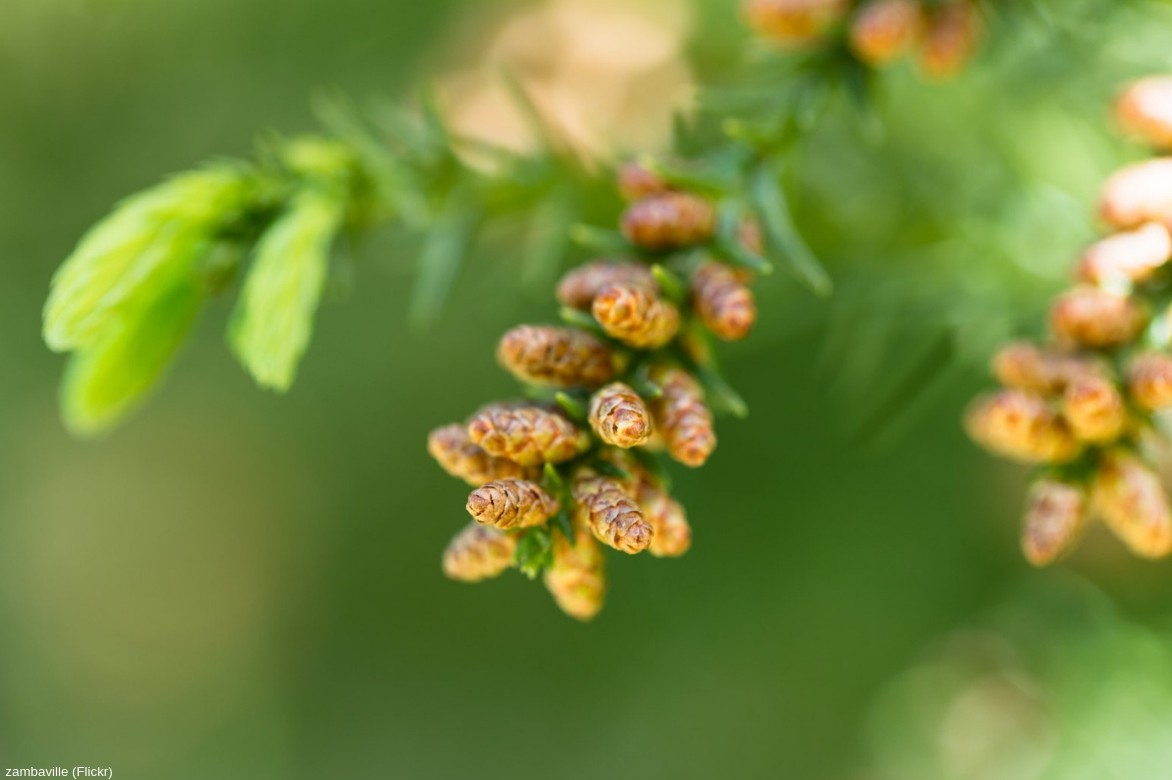
Male aments of Cryptomeria japonica
When to plant?
Cryptomeria japonica is best planted from September to November and from February to June. In mild, well-watered climates, planting a potted specimen can be done almost year-round, avoiding periods of severe frost or extreme heat.
How to plant?
With small plants (50 cm tall), around 2 years old for example, establishment is very easy.
- Immerse the pot in a bucket of water to thoroughly moisten it.
- Dig a hole three times wider than the rootball and loosen the soil around it with the tines of a digging fork.
- Add manure or compost to ensure a good start for the tree, whose growth can be quite rapid.
- Place the plant in the planting hole.
- Backfill the soil and firm lightly, shaping a saucer-shaped hollow.
- Mulch to keep soil cool and water with at least 10 L.
In a deep, sizeable pot, place a drainage layer (gravel, clay pebbles, broken pots…), make a mix of 1/3 topsoil, 1/3 sand and 1/3 heather soil, turf or well-rotted compost. Mulch the surface of the pot.
Read also
How to choose a cedar well?Care
- Water Cryptomeria generously during first 3-4 years, and in case of prolonged drought. Plant becomes fairly self-sufficient quickly unless grown in a container. Remember to spray water regularly on plants grown as bonsai.
- Apply every year in April a special conifer fertiliser and hoe the soil in summer to avoid capillary rise if no mulch is used.
- You can leave dry twigs fallen on soil to form a natural mulch.
- Protect young plants with a frost fleece if winters are cold.
- Pruning is not necessary. Dwarf forms can undergo a light pruning of shoots in March–April or late summer (August–September), as can Cryptomeria japonica ‘Elegans’, which hates close pruning!
- No diseases or pests have been reported on Cryptomeria in Europe. Root rot (Armillaria) has been reported in some places such as Hawaii under warm, humid conditions.
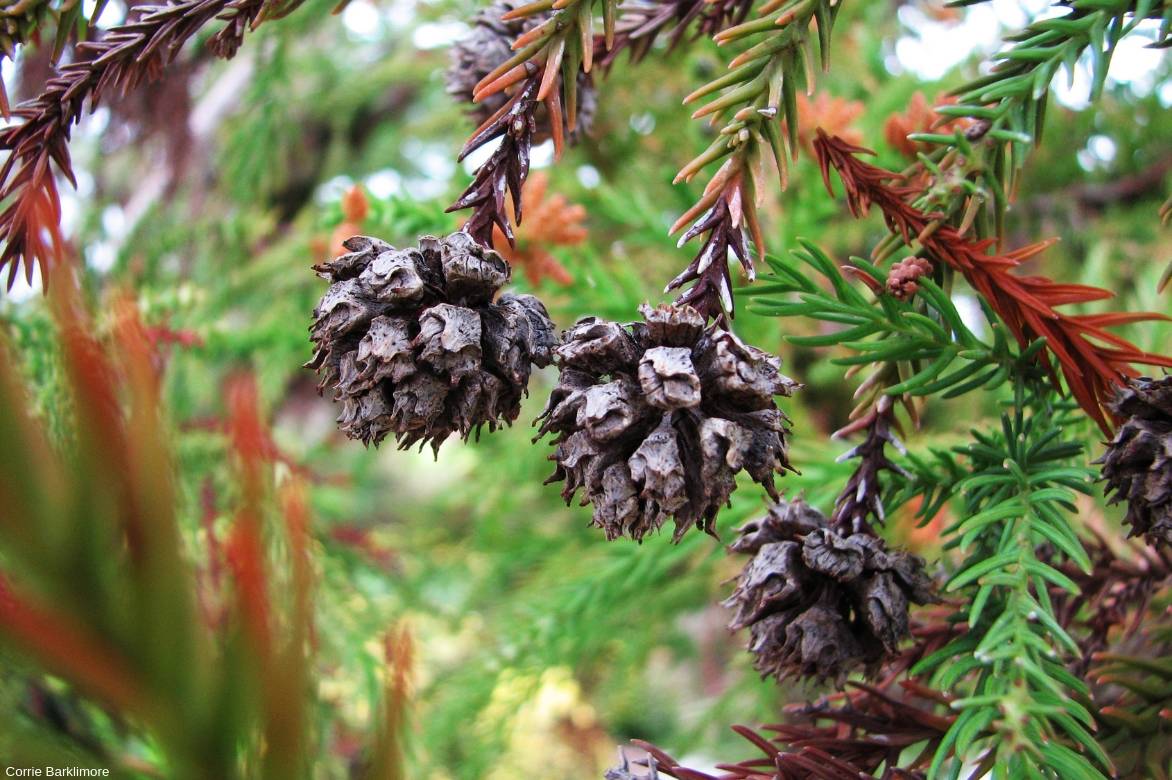
Cones of Cryptomeria japonica
Multiplication
Simplest propagation method is to propagate Cryptomeria and its cultivars by cuttings between August and October or to sow seeds of the type species in spring.
Propagation by cuttings
Prepare a deep pot by filling it with 50% turf and 50% sand.
- Take 15 cm long terminal cuttings from August-grown shoots, selecting the most vigorous.
- Remove needles from base of cutting.
- Dip base in plant hormone.
- Insert them to two-thirds of their length, avoiding contact between cuttings.
- Firm soil gently all around to remove air pockets and ensure good contact between soil and cutting.
- Keep them covered in shade, for example by placing a cut transparent plastic bottle over them.
- Remove plastic after one month and keep cuttings warm, protected from direct sun.
- Wait 4 to 6 months for sufficient rooting.→ Discover our tutorial : How to propagate conifers?
Sowing
- Obtain seeds from a seed merchant.
- Stratify them for a few days in the fridge.
- Sow them in a tray filled with potting compost mixed with sand.
Uses and associations
Cryptomeria varieties have often been selected for seasonal colour variations, ranging from very bright green in spring that darkens in summer then reddens, sometimes turning fiery with cold, as with Vilmorinia or Elegans. Ball-shaped forms in Compressa, conical in Yokohama, rather weeping in Sekkan Sugi, columnar in Elegans offer a range of possibilities for pairing with other prostrate evergreen bushes or for creating a hedge. Feel free to plant them with bushes with small glossy, richly coloured leaves such as Abelia Sparkling Silver, Berberis darwinii or Berberis thunbergii Orange Dream or Golden Carpet. Heathers and other dwarf conifers with bluish tones such as Juniperus squamata Blue Star are among options to accompany Cryptomeria in a rock garden or on a terrace. This plant, with its distinctive silhouette and foliage texture, works well with large stones, geometric lines and masonry work.
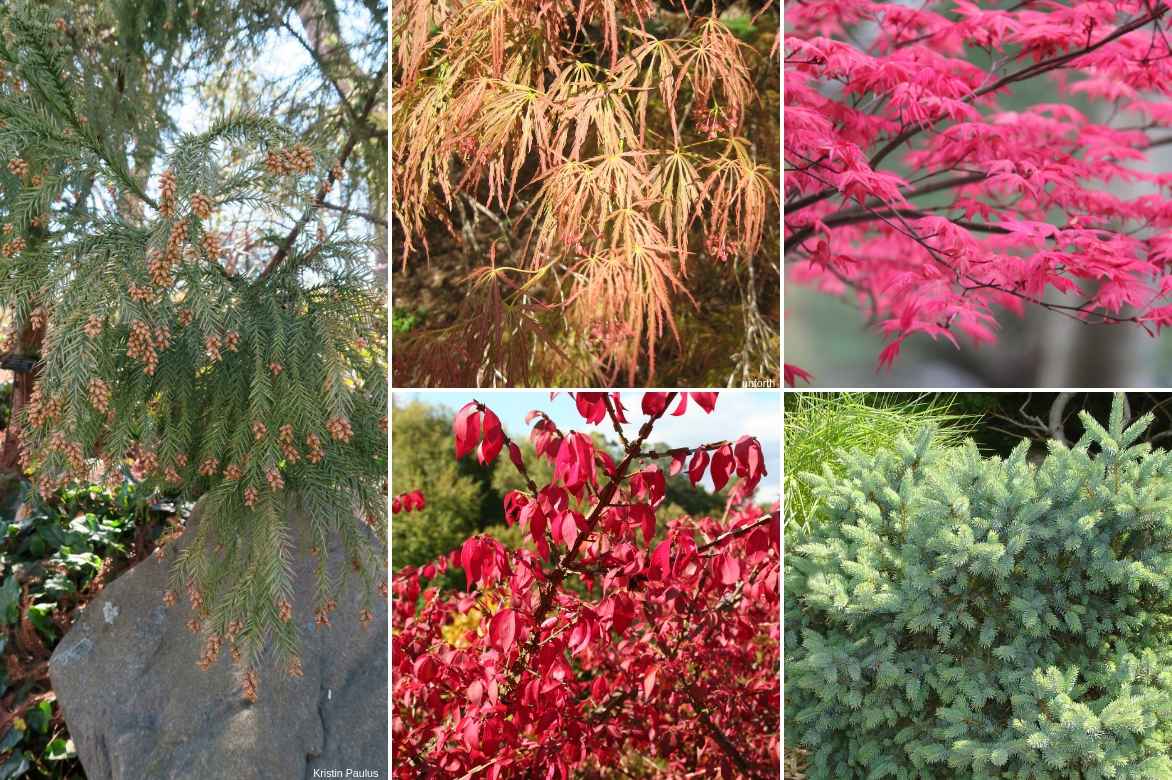
An autumn pairing idea: Cryptomeria japonica ‘Sekkan Sugi’, Acer palmatum ‘Dissectum’, Acer palmatum ‘Shindeshojo’, Euonymus alatus and Picea glauca ‘Cecilia’
Cryptomeria japonica ‘Sekkan Sugi’, with its snow-covered fir-like appearance, discreet elegance and moderate growth up to 6.50 m high by 3.5 m wide, deserves a place in the garden. It can enliven semi-shaded areas or provide a bright, low-maintenance backdrop for borders, thanks to its cream to near-white winter foliage. It can thus enhance flowering of a scented wild camellia such as Camellia lutchuensis.
Species type Cryptomeria japonica, often bearing several very straight trunks and dark evergreen, reptilian-looking foliage, is a remarkable specimen for a medium-sized garden that will make an impact in isolation, especially as it keeps modest dimensions of around 10 m high by 3 to 5 m diameter or when paired with maples, gingkos or liquidambars to create a contrasting autumn scene.
Further reading
Discover our range of Cryptomerias: the most beautiful varieties for all garden types
Discover our video on Cryptomeria ‘Sekkan Sugi’
- Subscribe!
- Contents
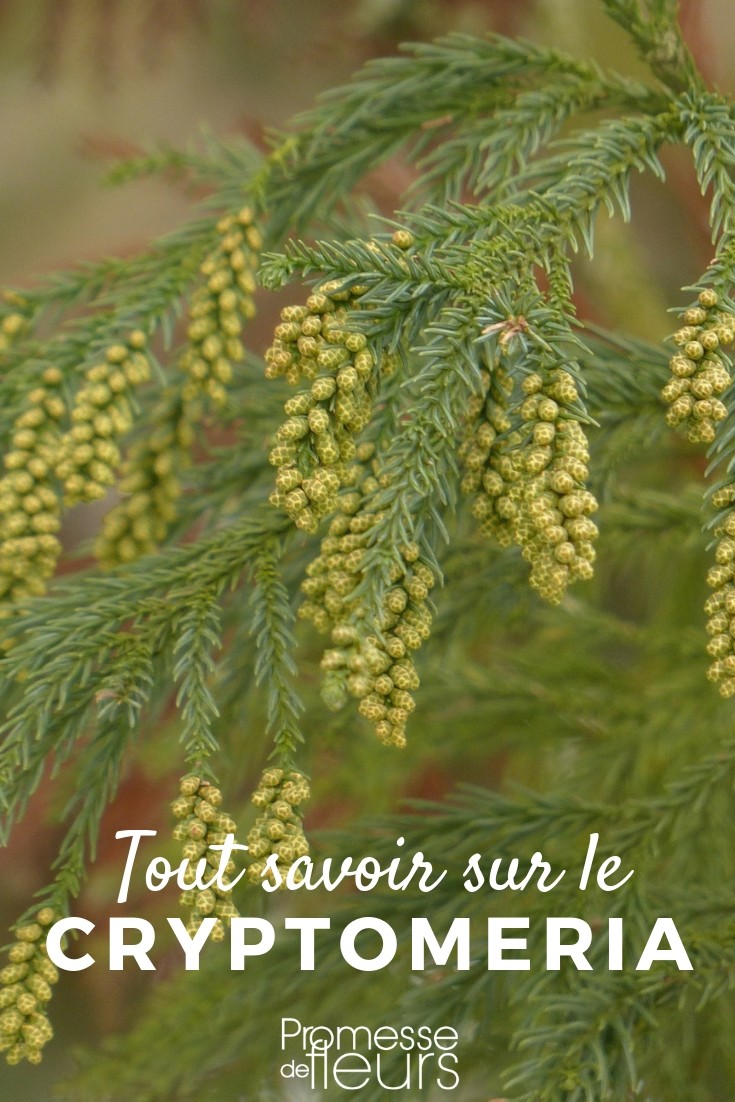































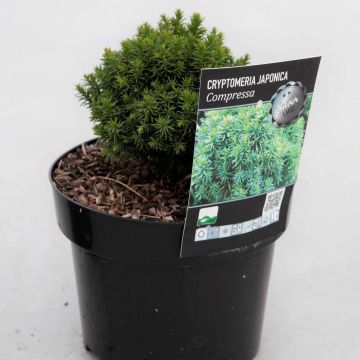

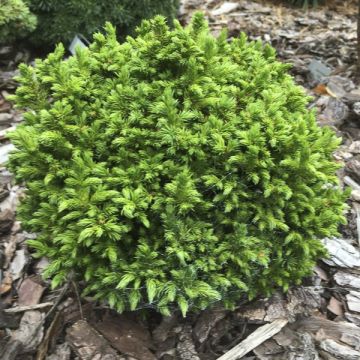
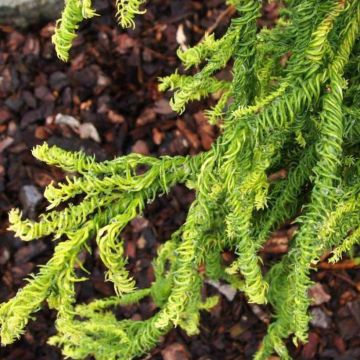
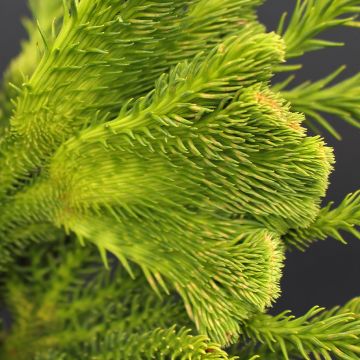
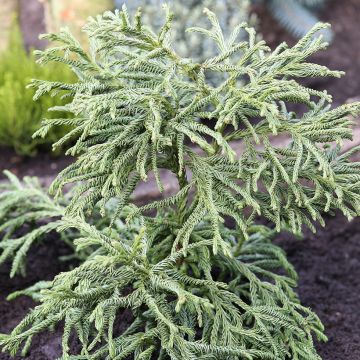
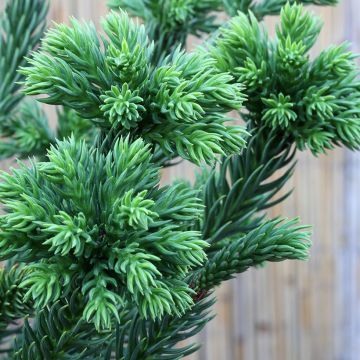
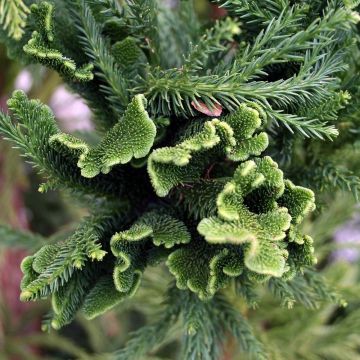

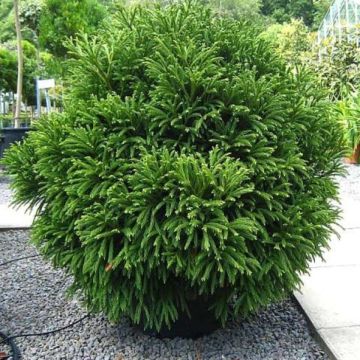
Comments